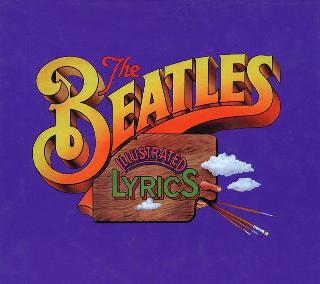Index
Home
Vorige
Eight Days a Week
Composer(s) : Lennon and McCartney
Year : 1964
Chords/Tabs: Eight Days a Week
Notes On "Eight Days a Week" (EDAW)
Copyright 1989 Alan W. Pollack
All Rights Reserved
The harmony of "Eight Days A Week" is built out of a wonderfully teasing
exploitation of the special effect called a "false (or "cross") relation".
This harmonic idiom is used quite a bit throughout the Beatles' output
and I think that EDAW is an object lesson worth exploring.
("Hey, I thought he'd talk about those infamous parallel fifths, but
this false relations stuff sounds *really* kinky!")
False Relations, Defined
A false relation is nothing more than a chromatic contradiction between
two notes in a single chord or in different parts of adjacent chords.
Within the confines of academic tonal theory this is considered a
"syntax error" but it has been used throughout the ages by composers
for expressive effect; a sort of a musical poetic license.
As my one sentence definition above implies, false relations come in
two flavors; both are well loved by the Beatles and I'll cite examples
of each though only the second flavor is of concern in EDAW:
1. contradiction between two notes in one chord -- the manifestation of
this seen most frequently is the simultaneous use of the major
and minor 3rd in a chord; this is one of the factors which makes
the blues sound, well, bluesy. A Beatle example off the top of the
head is "Night Before"; the accompaniment is clearly in D major
(which uses F#) while the melody repeatedly incorporates the
F-natural of the minor mode.
2. contradiction between adjacent chords -- this is the more subtle of
the two flavors because the ear picks it up only by following the
succession of two chords over time, whereas the flavor #1
above involves an outright, instantaneous clash. As we'll see,
the pervasive application of this effect provides a unifying
influence on EDAW.
False Relations Located in EDAW
False relations appear in both the verse and refrain of EDAW. The song
is in D-major and the false relation in each case involves G-natural and G#;
note that The G-natural has a melodic tendency to fall to F# and the G# has
the tendency toward A-natural.
- the verse -- each phrase of the verse has its own false relation. Here's
phrase 1 ("Love you every day, girl ..."):
D-Maj ->E-Maj ->G-Maj ->D-Maj
(uses G#) (uses G-natural)
I V of V IV I
The effect is particularly subtle because the G# in second chord appears
in a middle voice while the G-natural in the following chord is in the
outer voices.
In phrase 2 ("Hold me...") the false relation does not happen between
immediately adjacent chords but the alternating appearance of G#/G-natural
is definitely heard:
B-min ->E-min ->B-min ->E-Major
(uses G-natural) (uses G-major)
VI II6 VI V of V
3
I would argue that the false relation is accentuated in the above
phrase by the fact that the E-minor chord appears in its first
inversion with the G-natural in the bass line!
- the refrain -- ("Eight Days A Week ...") - the progression is as follows
with the false relation hopefully clearly spelled out:
A-Maj ->B-min ->E-Maj ->G-Maj ->A7
(G#) (G-natural)
V VI V of V IV V
Other Harmonic Teases
EDAW makes very spare use of the dominant chord ("V"), and even when it does
appear it doesn't always behave as we might expect. A couple of details
(referring the chord progressions outlined above):
- the V chord's first appearance is delayed all the way until the refrain;
it doesn't make any appearance in the verse which is a particular
tease in that the E-Major chord ("V of V") would seem to prompt for it.
- the first appearance of the V chord at the beginning of the refrain
resolves "deceptively" to the VI chord instead of the tonic (I). The
V of V in the second part of the refrain finally moves to the V itself
but *by way* of the false-relation-inducing IV chord.
- the return of the verse following the refrain, then, is the only place
in the song that we have a garden variety V-I cadence. In other words,
the verses by themselves rely on the IV-I (so-called Plagal cadence)
to establish the key.
- Anybody out there notice that the unique triplet-rhythm phrase which
is used both in the (fade-in!!) intro and coda happens to use the
same chord progression as the beginning of the verse but over a
D pedal tone ? (It's kind of like a Bach Prelude.)
... and one last thing
Lest any of you think I'm some dessicated pedant who derives no joy from
the music let me share with you: I was in 11th grade when this song first
came out. I was a regular Schroder-from-the-Peanuts-cartoon who was into
classical music and eschewed virtually all popular music. To make a long
story short, I can still remember (and experience) the hair on the back of
my neck standing up when I hear(d) those parallel 5ths/4ths in the break.
So there :-).
BTW, I assume a certain basic knowledge of musical notation and theory in
these articles. Please don't hesitate to send e-mail if you have any
questions or suggestions on how to make them more intelligible.
Alan (awp@mirror.tmc.com)
---
"They tried to fob you off on this musical charlatan,
but *I* gave him the test."
Ook op Beatles for Sale:
Ook op 1962-1966:
Ook op 1:
(c) 2024 Serge Girard


 (c) Alan Aldrigde, The Beatles Illustrated Lyrics
(c) Alan Aldrigde, The Beatles Illustrated Lyrics